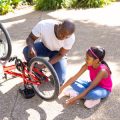1. Introduction to the Stroke Rehabilitation Team
Recovering from a stroke can be a long and challenging journey, but no one has to go through it alone. In the United States, stroke rehabilitation is built around a strong, multidisciplinary team approach. This means that professionals from different fields work closely together, along with the patient and their family, to create the best possible recovery plan. Collaboration and patient-centered care are at the heart of this process.
What Is a Multidisciplinary Team?
A multidisciplinary team brings together experts from various healthcare backgrounds. Each team member has specialized skills, but they all share a common goal: helping the patient regain as much independence and quality of life as possible after a stroke. By working together, these professionals can address every aspect of recovery—from movement and speech to emotional well-being and daily activities.
Key Members of the American Stroke Rehabilitation Team
| Team Member | Main Role in Stroke Rehab |
|---|---|
| Physiatrist (Rehabilitation Doctor) | Leads the rehab plan, monitors progress, adjusts treatments |
| Physical Therapist (PT) | Focuses on movement, balance, strength, and mobility training |
| Occupational Therapist (OT) | Helps with everyday tasks like dressing, eating, bathing, and using adaptive equipment |
| Speech-Language Pathologist (SLP) | Works on speech, language, communication, and swallowing issues |
| Nurses | Provide medical care, medication management, and support for daily needs |
| Social Worker/Case Manager | Assists with discharge planning, resources, insurance, and emotional support for families |
| Caregivers & Family Members | Offer ongoing help at home and emotional encouragement throughout recovery |
Why Teamwork Matters in American Stroke Rehabilitation
This collaborative approach ensures that every part of the patient’s recovery is covered. For example, while a physical therapist works on walking or standing safely, an occupational therapist might teach new ways to cook or get dressed independently. The team meets regularly to discuss progress and adjust goals based on what works best for each person. Most importantly, patients and families are always included in these discussions—making sure care is truly centered around individual needs and preferences.
2. Role of Therapists: PT, OT, and SLP Explained
After a stroke, recovery can feel overwhelming. In the United States, a dedicated team of therapists works closely with patients and their families to help regain independence and improve quality of life. Let’s break down what Physical Therapists (PTs), Occupational Therapists (OTs), and Speech-Language Pathologists (SLPs) do in the stroke rehab process.
Physical Therapists (PTs): Moving Toward Independence
PTs are movement experts who focus on helping patients regain strength, balance, and mobility after a stroke. They assess how the stroke has affected walking, balance, and muscle function. Then, they create personalized exercise programs to:
- Improve walking and standing ability
- Increase strength and flexibility
- Reduce risk of falls
- Train safe transfers (like moving from bed to chair)
PTs often use equipment like parallel bars or walkers and teach family members how to assist safely.
Occupational Therapists (OTs): Getting Back to Daily Life
OTs help stroke survivors relearn everyday skills needed for independent living. Their work is centered around “activities of daily living” (ADLs), such as:
- Dressing, bathing, grooming
- Cooking and eating
- Managing medications
- Using adaptive tools for home or work tasks
OTs also address vision problems, memory issues, and may suggest changes at home for safety—like grab bars in the bathroom or rearranging furniture.
Speech-Language Pathologists (SLPs): Communication & Swallowing Support
SLPs specialize in helping those who have trouble speaking, understanding language, or swallowing after a stroke. Their expertise covers:
- Speech therapy to improve talking or comprehension
- Cognitive exercises for memory or problem-solving
- Swallowing assessments and safe eating strategies
- Non-verbal communication options if needed
This support is vital for social interaction, nutrition, and overall well-being.
The Different Roles at a Glance
| Therapist Type | Main Focus Areas | Common Activities |
|---|---|---|
| Physical Therapist (PT) | Movement & Strength | Walking practice, balance training, transfer techniques |
| Occupational Therapist (OT) | Daily Living Skills & Independence | Self-care tasks, home safety modifications, adaptive equipment training |
| Speech-Language Pathologist (SLP) | Communication & Swallowing | Speech therapy, cognitive exercises, swallowing assessments |
The Power of Teamwork in Stroke Rehab
These therapists regularly communicate with each other and with doctors to make sure care is coordinated. They also educate family members so everyone can work together toward recovery goals. With their support, many stroke survivors in America make incredible strides on their road to recovery.
![]()
3. Physicians Contributions: Neurologists, Physiatrists, and More
When it comes to stroke rehabilitation in the United States, physicians play a vital role in guiding both the immediate medical care and long-term recovery of stroke survivors. Different types of doctors work together with therapists and caregivers to make sure each patient receives a personalized rehab plan that fits their unique needs. Here’s a closer look at how key physicians contribute to stroke recovery:
Neurologists: The Brain Health Experts
Neurologists are doctors who specialize in treating diseases of the brain and nervous system. After a stroke, they take charge of diagnosing what kind of stroke occurred and its effects on the brain. They monitor the patient’s neurological status, order tests like MRIs or CT scans, prescribe medication, and help manage risk factors to prevent another stroke. Neurologists often work closely with the rest of the rehab team to track cognitive changes and recommend therapies that address problems with thinking, memory, or movement.
Physiatrists: Rehab Medicine Specialists
Physiatrists (also called Physical Medicine & Rehabilitation doctors or PM&R specialists) focus on restoring function and improving quality of life after injury or illness. In stroke rehab, physiatrists develop comprehensive rehabilitation plans. They coordinate therapies—like physical, occupational, and speech therapy—monitor progress, adjust medications for muscle tone or pain, and address issues such as spasticity (muscle stiffness). Physiatrists also educate patients and families about adaptive equipment or home modifications that can make daily life easier.
Other Physicians Involved in Stroke Rehab
| Type of Physician | Main Role in Stroke Rehab |
|---|---|
| Primary Care Physicians (PCPs) | Monitor overall health, manage chronic conditions (e.g., diabetes, high blood pressure), coordinate ongoing care after discharge from hospital or rehab facility. |
| Cardiologists | Treat heart-related issues that may have caused the stroke or impact recovery; manage medications for heart health. |
| Pulmonologists | Assist if breathing or lung problems arise during recovery. |
| Psychiatrists/Psychologists | Address emotional well-being, depression, anxiety, or behavior changes after stroke. |
The Collaborative Approach in American Stroke Care
In the U.S., it’s common for these doctors to communicate regularly with each other as well as with therapists and caregivers. This “team-based” model ensures that every aspect of a patient’s recovery is covered—from medical management and therapy progress to mental health support. By working together, they help stroke survivors regain independence and achieve their best possible outcomes.
4. The Vital Role of Caregivers and Family Members
Family members and caregivers are the unsung heroes in stroke rehabilitation across America. Their support, involvement, and advocacy can make a big difference in a patient’s recovery journey. In the U.S., it’s common for family members to take on caregiving roles, working closely with therapists and doctors to help loved ones regain independence.
The Impact of Family Caregivers
Family caregivers often provide daily assistance with activities like bathing, dressing, eating, medication management, and transportation to therapy sessions. Emotional support is just as important; encouragement from loved ones helps stroke survivors stay motivated and positive during the rehab process.
Cultural Expectations in the United States
In American culture, there is an expectation that families will step in to help after a medical crisis like a stroke. However, many people also rely on community resources or professional caregivers when extra help is needed. It’s common for adult children or spouses to coordinate care while balancing jobs and other responsibilities.
Common Support Roles of American Family Caregivers
| Support Role | Examples of Activities |
|---|---|
| Personal Care | Bathing, grooming, dressing, toileting |
| Mobility Assistance | Helping with walking, transferring, using mobility aids |
| Medical Management | Administering medications, attending appointments |
| Emotional Support | Encouraging participation in therapy, providing companionship |
| Advocacy | Communicating with healthcare providers, coordinating services |
Resources Commonly Used by American Families
The U.S. offers many resources for stroke caregivers and their families. These include:
- Home Health Services: Nurses or therapists visit the home to continue rehabilitation.
- Support Groups: Local hospitals or organizations like the American Stroke Association host meetings where caregivers share experiences.
- Respite Care: Temporary relief services give primary caregivers a break.
- Online Resources: Websites such as Stroke.org offer educational materials and community forums.
- Social Workers: Hospital-based social workers connect families to financial aid programs and local assistance.
The Bottom Line for Caregivers in Stroke Rehab Teams
Caregivers are essential partners in stroke recovery. Their contributions—whether hands-on care or emotional encouragement—help patients achieve better outcomes. In America, there are both expectations and practical supports for those taking on this important role.
5. Coordination of Care and Navigating the U.S. Healthcare System
After a stroke, recovery often involves working with several professionals as part of an American stroke rehabilitation team. Understanding how this team works together—and how to navigate the healthcare system—can make your journey smoother and less stressful.
How Teamwork is Coordinated
In the United States, stroke rehabilitation is a group effort. Team members communicate regularly through meetings called “care conferences” or “team huddles.” Here, therapists, physicians, nurses, social workers, and case managers discuss patient progress, adjust treatment plans, and set new goals. Family caregivers are also encouraged to participate and ask questions.
Typical Stroke Rehab Team Members and Roles
| Team Member | Main Role | Common Communication |
|---|---|---|
| Physiatrist (Rehab Doctor) | Leads rehab plan, manages medical needs | Updates team on medical status |
| Physical Therapist (PT) | Improves movement and strength | Shares mobility progress |
| Occupational Therapist (OT) | Helps with daily living skills | Reports on independence in self-care |
| Speech-Language Pathologist (SLP) | Treats speech and swallowing issues | Notes communication/swallowing changes |
| Nurse | Cares for daily medical needs | Keeps track of vital signs & medications |
| Social Worker/Case Manager | Coordinates services & insurance; supports family | Liaises between team & insurance providers |
| Family Caregiver(s) | Supports patient at home; advocates for their needs | Shares observations from home environment |
Approaches to Case Management in the U.S.
The case manager or social worker is your main guide through the system. They help coordinate care transitions (like moving from hospital to rehab facility or home), arrange outpatient therapy, assist with paperwork, and make sure everyone on the team stays informed. They can also connect you with community resources such as support groups or transportation services.
Navigating Insurance and Rehabilitation Services: Practical Tips
- Know Your Coverage: Review your health insurance policy (Medicare, Medicaid, or private insurance) to understand what rehab services are included. Call your insurer if anything is unclear.
- Get Pre-Authorization: Many rehab services require prior approval from your insurance company. Ask your case manager for help submitting necessary forms.
- Keep Records: Save all paperwork—including therapy notes, bills, and communication with providers—for reference or appeals.
- Ask About In-Network Providers: Using hospitals or clinics within your insurance network usually costs less out-of-pocket.
- Use Community Resources: Local organizations like the American Stroke Association offer free information and support groups for survivors and families.
If You Have Questions…
Your case manager or social worker is there to help! Don’t hesitate to speak up during care conferences or call them between appointments if you need more information or assistance navigating the system.


